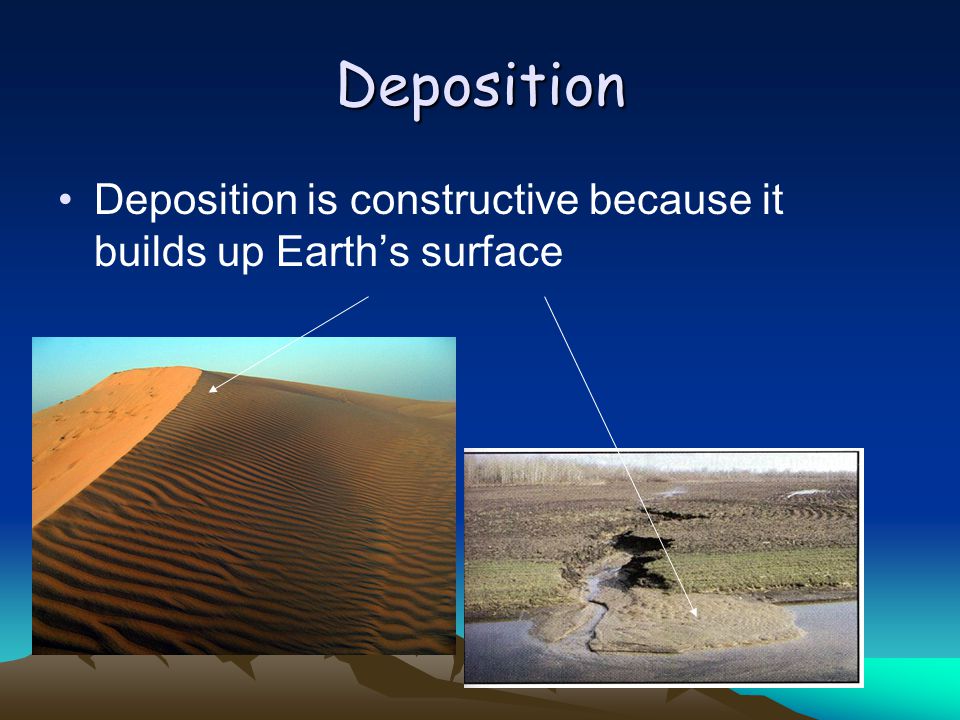Deposition Of Earth’s Material – General Science Notes – For W.B.C.S. Examination.
পৃথিবীর ভু সামগ্রীর ডীপোজিসন – সাধারণ বিজ্ঞান নোট – WBCS পরীক্ষা।
Erosion is defined as the removal of soil, sediment, regolith, and rock fragments from the landscape. Most landscapes show obvious evidence of erosion.Continue Reading Deposition Of Earth’s Material – General Science Notes – For W.B.C.S. Examination.
Erosion is responsible for the creation of hills and valleys. It removes sediments from areas that were once glaciated, shapes the shorelines of lakes and coastlines, and transports material downslope from elevated sites. In order for erosion to occur three processes must take place: detachment, entrainment and transport.
Erosion also requires a medium to move material. Wind, water, and ice are the mediums primarily responsible for erosion. Finally, the process of erosion stops when the transported particles fall out of the transporting medium and settle on a surface. This process is called deposition.
Energy of Erosion
The energy for erosion comes from several sources. Mountain building creates a disequilibrium within the Earth’s landscape because of the creation of relief. Gravity acts to vertically move materials of higher relief to lower elevations to produce an equilibrium. Gravity also acts on the mediums of erosion to cause them to flow to base level.
Solar radiation and its influence on atmospheric processes is another source of energy for erosion. Rainwater has a kinetic energy imparted to it when it falls from the atmosphere. Snow has potential energy when it is deposited in higher elevations. This potential energy can be converted into the energy of motion when the snow is converted into flowing glacial ice. Likewise, the motion of air because of differences in atmospheric pressure can erode surface material when velocities are high enough to cause particle entrainment.
The Erosion Sequence
Erosion can be seen as a sequence of three events: detachment, entrainment, and transport. These three processes are often closely related and sometimes not easy distinguished between each other. A single particle may undergo detachment, entrainment, and transport many times.
Detachment
Erosion begins with the detachment of a particle from surrounding material. Sometimes detachment requires the breaking of bonds which hold particles together. Many different types of bonds exist each with different levels of particle cohesion. Some of the strongest bonds exist between the particles found within igneous rocks. In these materials, bonds are derived from the growth of mineral crystals during cooling. In sedimentary rocks, bonds are weaker and are mainly caused by the cementing effect of compounds such as iron oxides, silica, or calcium. The particles found in soils are held together by even weaker bonds which result from the cohesion effects of water and the electro-chemical bonds found in clay and particles of organic matter.
Physical, chemical, and biological weathering act to weaken the particle bonds found in rock materials. As a result, weathered materials are normally more susceptible than unaltered rock to the forces of detachment. The agents of erosion can also exert their own forces of detachment upon the surface rocks and soil through the following mechanisms:
Physical, chemical, and biological weathering act to weaken the particle bonds found in rock materials. As a result, weathered materials are normally more susceptible than unaltered rock to the forces of detachment. The agents of erosion can also exert their own forces of detachment upon the surface rocks and soil through the following mechanisms:
Plucking: ice freezes onto the surface, particularly in cracks and crevices, and pulls fragments out from the surface of the rock.
Cavitation: intense erosion due to the surface collapse of air bubbles found in rapid flows of water. In the implosion of the bubble, a micro-jet of water is created that travels with high speeds and great pressure producing extreme stress on a very small area of a surface. Cavitation only occurs when water has a very high velocity, and therefore its effects in nature are limited to phenomenon like high waterfalls.
Raindrop impact: the force of a raindrop falling onto a soil or weathered rock surface is often sufficient to break weaker particle bonds. The amount of force exerted by a raindrop is a function of the terminal velocity and mass of the raindrop.
Abrasion: the excavation of surface particles by material carried by the erosion agent. The effectiveness of this process is related to the velocity of the moving particles, their mass, and their concentration at the eroding surface. Abrasion is very active in glaciers where the particles are firmly held by ice. Abrasion can also occur from the particles held in the erosional mediums of wind and water.
Please subscribe here to get all future updates on this post/page/category/website


 +919674493673
+919674493673  mailus@wbcsmadeeasy.in
mailus@wbcsmadeeasy.in







































































































